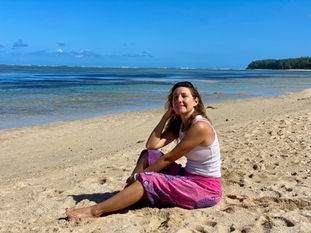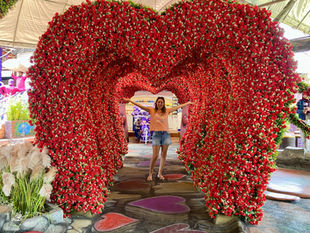
What Is Slow Travel? A More Meaningful Way to Explore the World
Jun 17
4 min read
0
0
What Is Slow Travel? A More Meaningful Way to Explore the World
Somewhere between a roadside fruit stall and a forest trail in Mauritius, I stopped rushing.
No schedule. No checklist. Just a pause long enough to smell the guava trees, speak a few words in Creole, and let the island reveal itself slowly.
That’s when I truly understood the meaning of slow travel — and why it’s changing the way we explore the w
world.
🌍 What Is Slow Travel?
Slow travel is a mindset. It’s about traveling with intention, not urgency.
Unlike fast-paced tourism that focuses on ticking off landmarks and collecting passport stamps, slow travel encourages us to:
Stay longer in fewer places
Engage deeply with local culture and nature
Travel at a pace that allows for reflection and connection
Put simply, slow travel is the opposite of mass tourism. It’s about being present, not just passing through.
When you spend more time in one place, you naturally start creating little routines — your morning café, the fruit seller who knows your name, a familiar walking trail. These rhythms lead to real human connection. You begin to live differently in each place, adapting to new habits and perspectives. That’s where the true magic happens.
🌱 The Benefits of Slow Travel
Whether you're a conscious traveler or simply tired of burnout, there are many reasons to embrace slow travel.
1. It’s Better for the Environment
Slow travel usually involves fewer flights and more local movement — like walking, biking, or using public transport. That means a smaller carbon footprint and less strain on local ecosystems.
2. It Supports Local Communities
When you choose locally owned guesthouses, eat at family-run restaurants, and shop in village markets, your money directly benefits the people who live there.
3. It Enhances Mental Well-being
Fast travel can feel like a race. You're constantly packing, unpacking, checking out, checking in. Spending just 3 or 4 days in each place often means you're never fully present — just scratching the surface before moving on. It’s mentally exhausting.
Slow travel creates space for presence, reflection, and meaningful moments — a kind of travel that nourishes, not exhausts.
4. It Leads to Deeper Experiences
By slowing down, you’re more likely to have genuine conversations, discover hidden gems, and witness the quiet beauty most travelers miss.
🌺 What Does Slow Travel Look Like?
If you’re wondering how to start, here are some practical examples of slow travel in action:
Choosing an eco-lodge or home-stay over a resort
Staying in one place for a week or more
Learning the basics of the local language
Exploring on foot or by bike instead of by car
Taking time to observe instead of rushing to consume
Many countries — including Mauritius — offer tourist visas for 3 months or more, often with the option to extend. This allows you to truly live in a country rather than just visit it, leading to an entirely different kind of experience.

In Mauritius, slow travel might look like:
Spending the morning browsing the Port Louis market, chatting with spice vendors
Visiting a sugarcane plantation and learning how rum is made
Attending a Sunday morning prayer ceremony at Grand Bassin
Taking quiet walks through Sophia Nature Park, listening to birdsong and noticing seasonal changes.
��🌸 My Personal Journey into Slow Travel
I used to plan every minute. I thought the more I saw, the richer the experience.
But everything changed during a solo hike in Réunion Island. I had a route mapped out — waterfalls, peaks, all the “must-see” spots. But what stayed with me wasn’t any of that. It was a stray dog that walked beside me for an hour. A sugarcane farmer who shared a smile and a story. The stillness above the clouds.
Since then, slow travel hasn’t just been a preference — it’s become a compass.
And it’s what led me to spend six months in Mauritius. Yes — six whole months. Can you imagine?
Most of the tourists I meet here have saved up for a year or more to stay in luxury resorts for two weeks. They rush from catamaran tours to spa treatments to hotel buffets — then leave. What they spend in two weeks, I stretch over three months.
Because I don’t need fancy — I need freedom. And slow travel gives me that.
💬 Why Slow Travel Matters More Than Ever
With rising concerns about climate change, over-tourism, and cultural erosion, the way we travel matters.
Slow travel invites us to do less — but experience more.It calls us back to our senses. To the earth. To ourselves.
And in doing so, it changes not just the way we see the world…But the way we live in it.
✨ Final Thoughts: An Invitation to Travel Differently
Whether you’re headed to a faraway island or rediscovering your own region, I hope this blog encourages you to travel more slowly, more consciously — and more meaningfully.
🌺 Ready to explore slow travel in Mauritius?Start with my Sustainable Tourism in Mauritius blog or browse my visual guides and nature-based itineraries.










